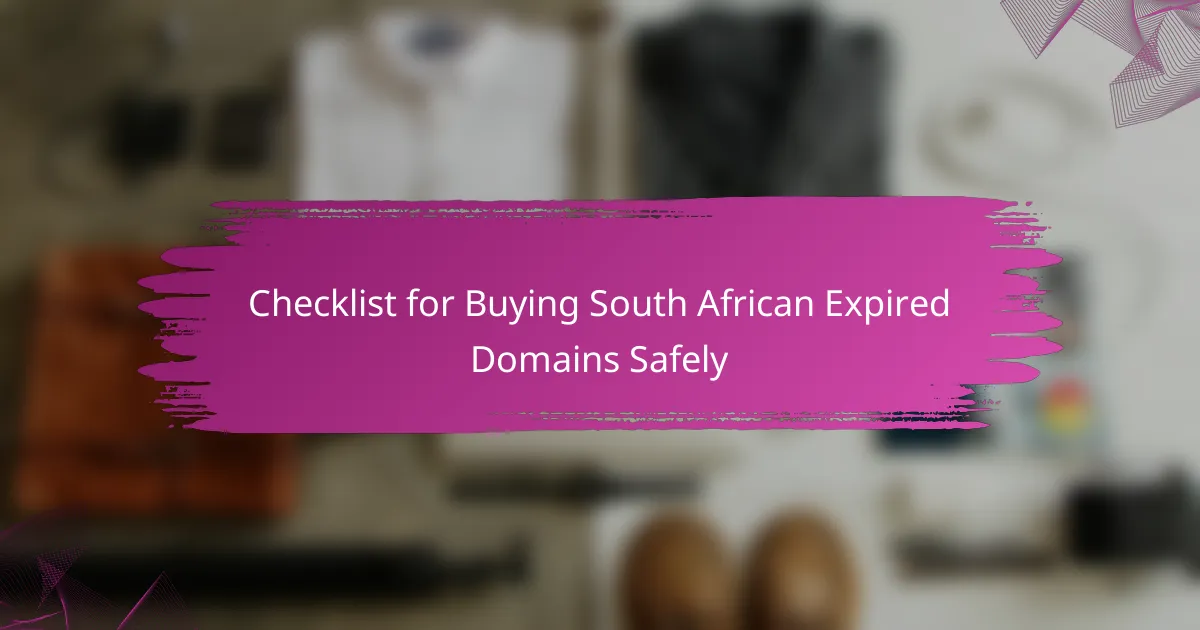When purchasing expired domains in South Africa, it’s essential to approach the process with caution to ensure a sound investment. Key factors to consider include the domain’s history, authority, and any existing penalties that could affect your online presence. Utilizing the right evaluation tools can help you identify valuable domains while minimizing risks associated with spam history and SEO penalties.
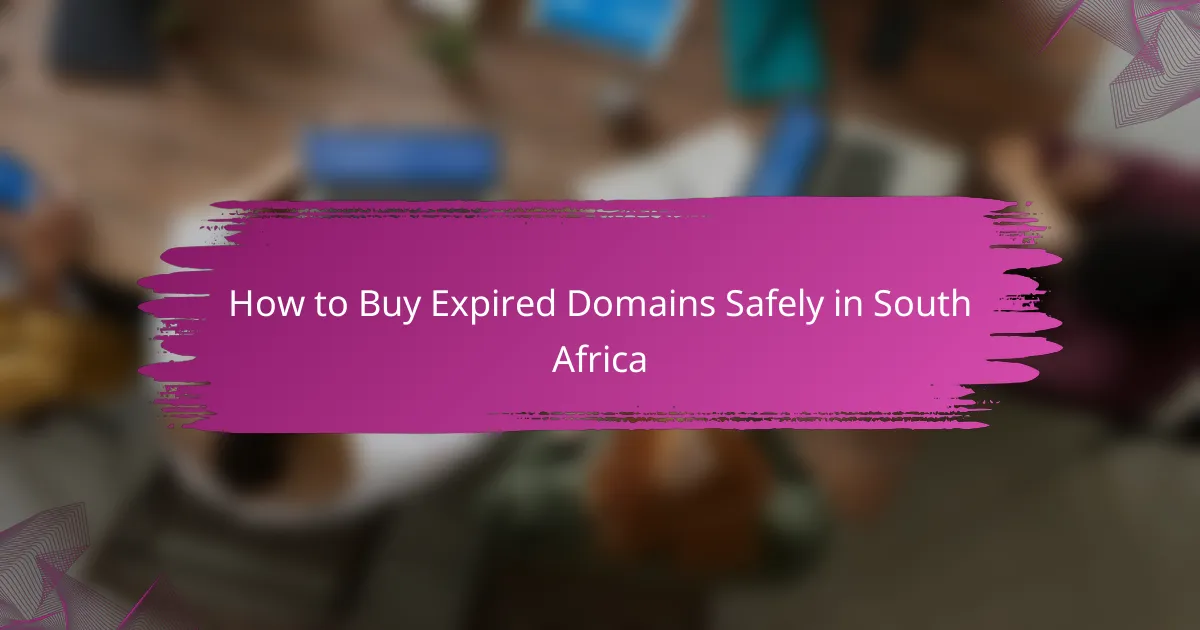
How to Buy Expired Domains Safely in South Africa
Buying expired domains in South Africa requires careful consideration of several factors to ensure a safe and beneficial investment. Focus on the domain’s history, authority, and any potential penalties to avoid future complications.
Research domain history
Understanding the history of an expired domain is crucial. Look for previous ownership, the type of content hosted, and any changes in domain registration. Tools like Wayback Machine can help you view past versions of the site.
Check for any previous associations with spam or malicious activities, as this can affect your future use of the domain. A clean history is essential for maintaining a good reputation and SEO performance.
Verify domain authority
Domain authority indicates how well a domain is likely to perform in search engine rankings. Use tools like Moz or Ahrefs to assess the domain’s authority score, which typically ranges from 1 to 100. Higher scores suggest better potential for traffic and visibility.
Additionally, consider the number of backlinks and referring domains. A domain with a strong backlink profile is generally more valuable and can provide a solid foundation for your online presence.
Check for penalties
Before purchasing an expired domain, ensure it has not been penalized by search engines. Use Google Search Console or similar tools to check for any manual actions or algorithmic penalties that could hinder your site’s performance.
Be wary of domains that have been flagged for violating guidelines, as recovering from such penalties can be challenging and time-consuming. A thorough check can save you from future headaches and financial loss.
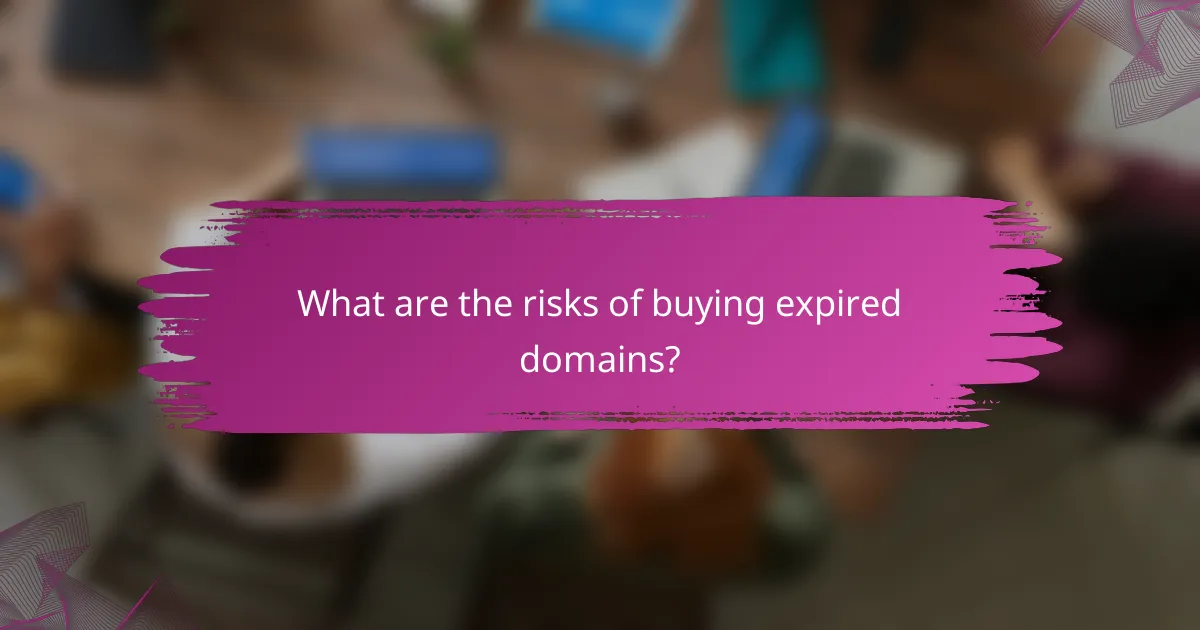
What are the risks of buying expired domains?
Buying expired domains carries several risks that can impact your online presence and investment. These risks include potential spam history and SEO penalties, which can hinder your website’s performance and reputation.
Potential for spam history
Expired domains may have a history of being associated with spammy activities, which can negatively affect their credibility. It is crucial to investigate the domain’s past to ensure it wasn’t used for malicious purposes, such as phishing or distributing malware.
To assess a domain’s spam history, use tools like the Wayback Machine or various SEO analysis platforms. Look for red flags such as a high number of backlinks from low-quality sites or a sudden drop in traffic, which may indicate previous spammy behavior.
SEO penalties
Domains with a history of SEO penalties can severely limit your ability to rank well in search engines. If a domain was previously penalized for black-hat SEO practices, it may carry over to your new ownership, affecting your site’s visibility.
Check for any existing penalties by reviewing the domain’s status in Google Search Console or using SEO audit tools. If you discover penalties, consider whether you can recover the domain’s reputation through clean SEO practices or if it’s better to look for a different expired domain.
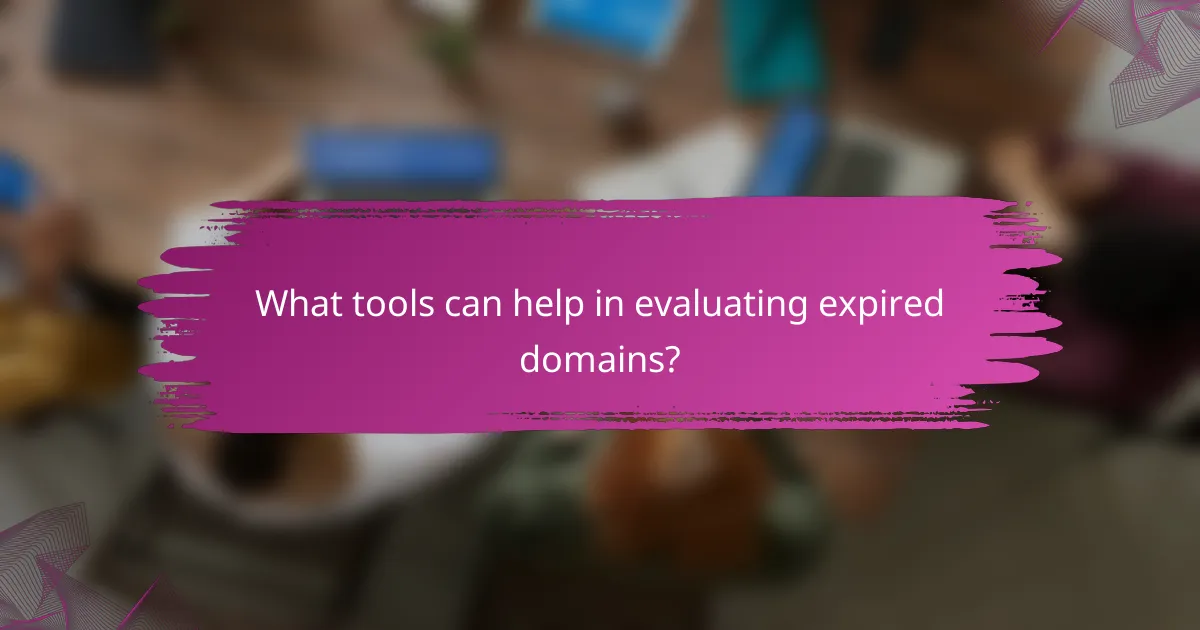
What tools can help in evaluating expired domains?
Several tools can assist in evaluating expired domains, focusing on metrics like backlinks, domain authority, and overall performance. Using the right tools can help identify valuable domains that align with your goals.
Ahrefs for backlink analysis
Ahrefs is a powerful tool for analyzing backlinks, which are crucial for determining a domain’s authority and potential SEO value. It provides insights into the number of backlinks, referring domains, and the quality of those links.
When using Ahrefs, look for domains with a diverse backlink profile and high-quality links from reputable sites. Avoid domains with a high percentage of spammy or low-quality backlinks, as these can harm your SEO efforts.
SEMrush for domain metrics
SEMrush offers a comprehensive set of domain metrics that help evaluate expired domains. Key features include domain authority, traffic estimates, and keyword rankings, which provide a clearer picture of a domain’s potential.
When assessing a domain with SEMrush, focus on its organic traffic trends and keyword positions. A domain with consistent traffic and relevant keywords is often a better investment than one with erratic performance.
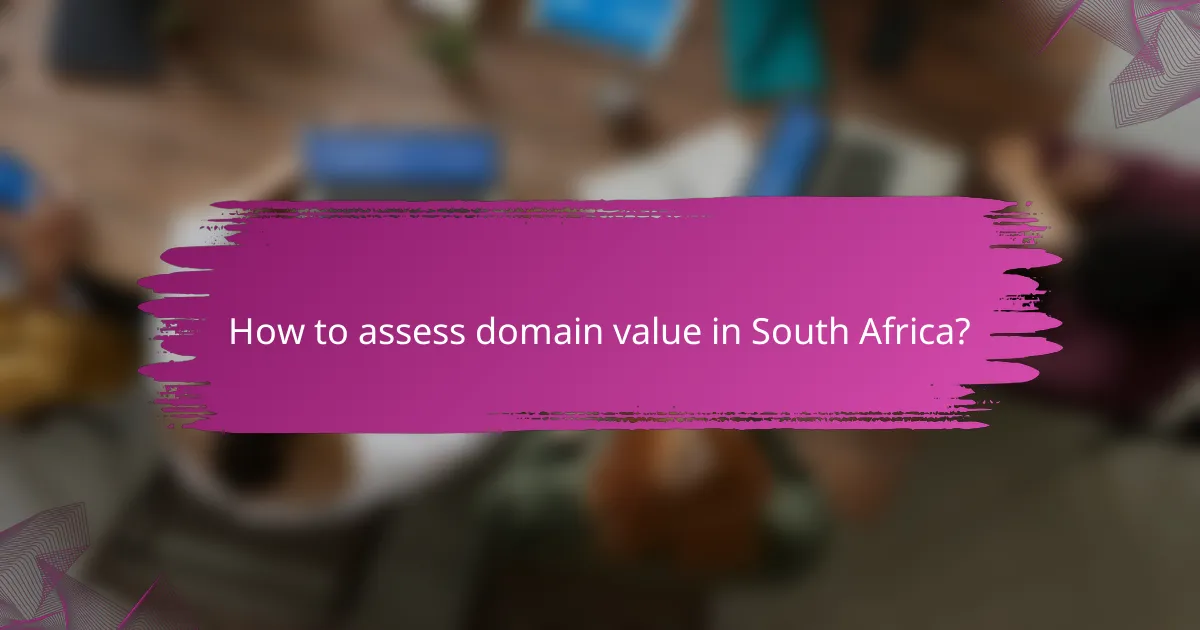
How to assess domain value in South Africa?
Assessing domain value in South Africa involves evaluating various factors such as traffic metrics, niche relevance, and overall market demand. Understanding these elements will help you make informed decisions when purchasing expired domains.
Evaluate traffic metrics
Traffic metrics are crucial for determining the potential value of an expired domain. Key metrics to consider include the average monthly visitors, bounce rate, and the sources of traffic. Tools like Google Analytics can provide insights into these figures, helping you gauge the domain’s past performance.
Look for domains with consistent traffic patterns rather than those with sporadic spikes. A domain that has maintained steady traffic over time is often more valuable. Aim for domains that attract organic traffic, as this indicates a strong SEO foundation.
Consider niche relevance
Niche relevance is essential when assessing a domain’s value, as it directly impacts its potential for future growth. A domain that aligns with a specific industry or audience is more likely to attract targeted visitors. Research the domain’s previous content and its alignment with current market trends.
Evaluate how well the domain fits into your intended use. If you plan to develop a website in a particular niche, ensure that the domain name reflects that focus. This relevance can enhance SEO efforts and improve user engagement, ultimately increasing the domain’s value.

What are the legal considerations when purchasing expired domains?
When buying expired domains in South Africa, it’s crucial to understand the legal implications involved. This includes ensuring that the domain doesn’t infringe on existing trademarks and verifying the rightful ownership of the domain before making a purchase.
Trademark issues
Trademark issues can arise if the expired domain name is similar to an existing trademark. Using a domain that infringes on a trademark can lead to legal disputes, including cease and desist letters or even lawsuits. Before purchasing, conduct a thorough trademark search to ensure the domain name does not conflict with registered trademarks.
In South Africa, you can check the Companies and Intellectual Property Commission (CIPC) database for registered trademarks. If a domain name closely resembles a trademark, consider choosing an alternative to avoid potential legal complications.
Ownership verification
Verifying ownership of an expired domain is essential to ensure that you are buying from the rightful owner. Use domain registration databases like WHOIS to check the current registrant and their contact information. This step helps confirm that the domain is indeed expired and available for purchase.
Additionally, be cautious of domains that have a history of ownership changes, as this can indicate potential disputes or issues. If possible, obtain a written agreement from the seller that confirms their ownership and your right to use the domain.
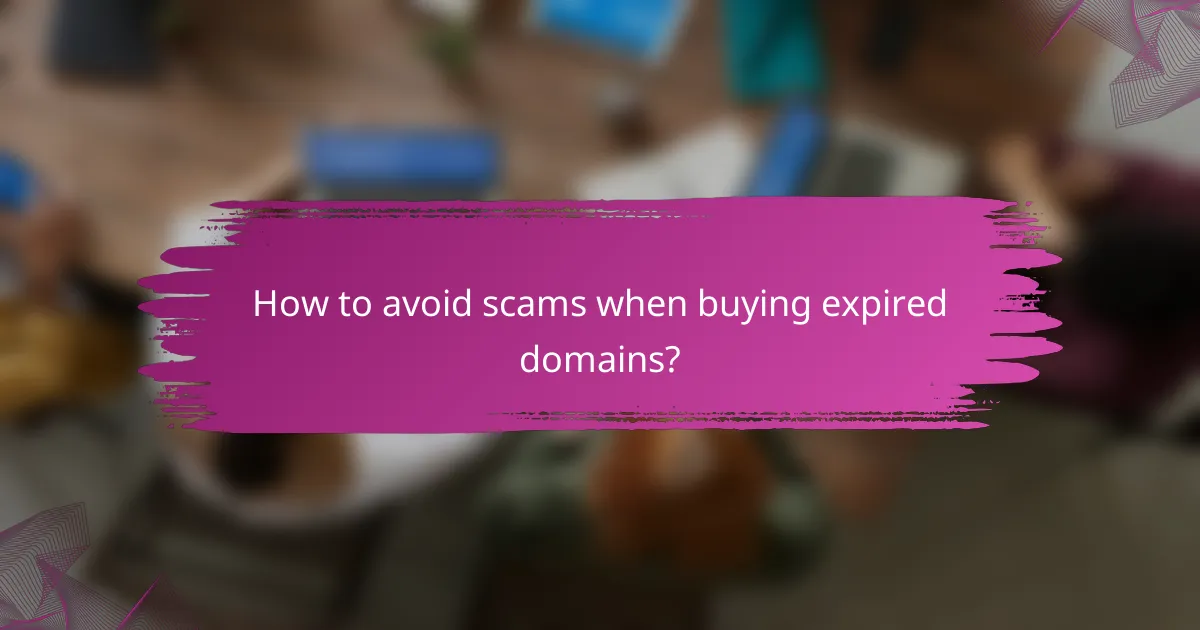
How to avoid scams when buying expired domains?
To avoid scams when purchasing expired domains, focus on verifying the legitimacy of the seller and the marketplace. Conduct thorough research to ensure that you are dealing with reputable sources and sellers with a solid track record.
Use reputable marketplaces
Selecting a trustworthy marketplace is crucial for safe transactions. Look for platforms that have established themselves in the domain buying community, such as GoDaddy Auctions, NameJet, or Sedo. These sites often have buyer protection policies and transparent processes.
Additionally, check if the marketplace provides user reviews and ratings. A marketplace with a high volume of positive feedback can indicate reliability, while a site with numerous complaints may be a red flag.
Check seller reputation
Before finalizing a purchase, investigate the seller’s reputation. Look for feedback from previous buyers, which can often be found on the marketplace or through independent review sites. A seller with a history of successful transactions is generally more trustworthy.
Consider reaching out to the seller with questions about the domain’s history or any concerns you may have. A responsive seller who provides clear answers can help build your confidence in the transaction. Avoid sellers with little to no feedback or those who seem evasive in their communication.
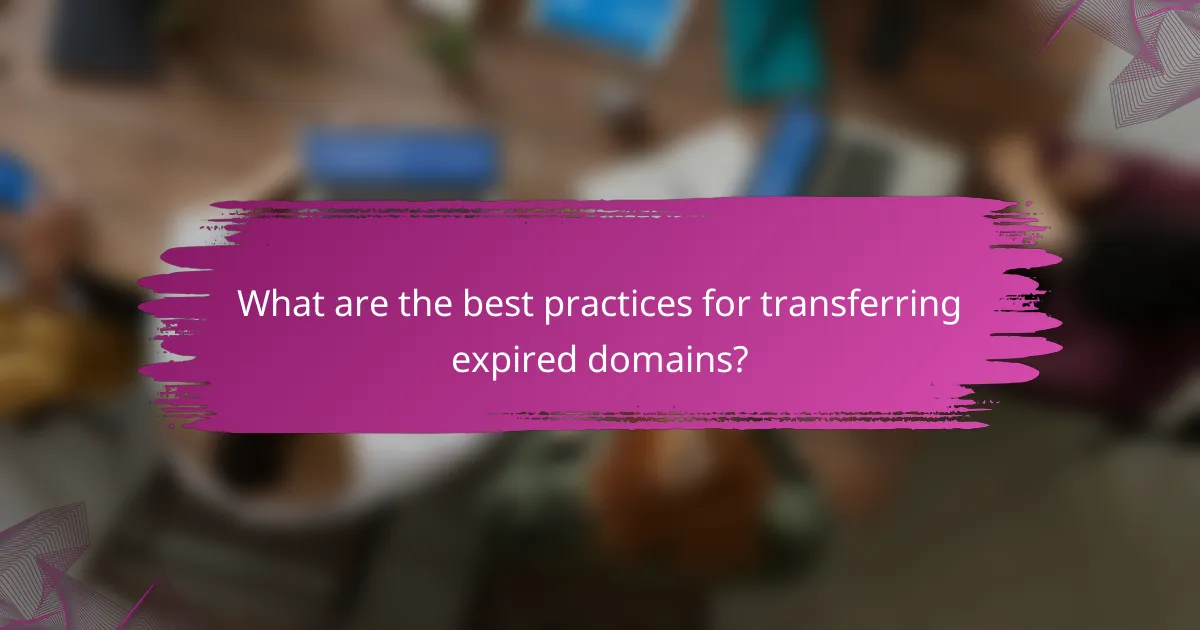
What are the best practices for transferring expired domains?
Transferring expired domains requires careful adherence to specific practices to ensure a smooth process. Key steps include following registrar guidelines and updating DNS settings promptly to maintain website functionality.
Follow registrar guidelines
Each domain registrar has its own set of rules and procedures for transferring expired domains. It’s essential to familiarize yourself with these guidelines to avoid delays or complications. For instance, some registrars may require you to unlock the domain or obtain an authorization code before initiating the transfer.
Additionally, ensure that the domain is not in a redemption period, as this can complicate the transfer process. Always check the registrar’s support documentation for detailed instructions and any specific requirements they may have.
Update DNS settings
Once the expired domain is successfully transferred, promptly update the DNS settings to point to your hosting provider. This step is crucial for restoring website functionality and ensuring that visitors can access your site without interruption. Typically, you will need to enter the nameservers provided by your hosting service.
It’s advisable to allow some time for DNS propagation, which can take anywhere from a few minutes to 48 hours. During this period, some users may still see the old site or experience downtime, so plan accordingly. Regularly check the domain’s status to confirm that the changes have taken effect.
